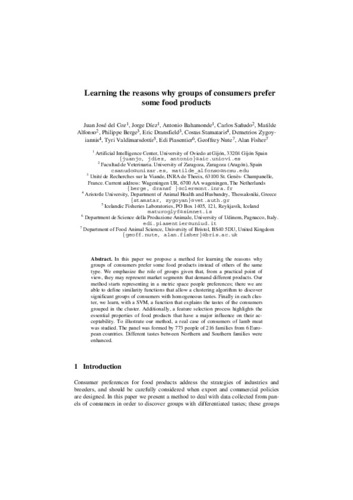Learning the reasons why groups of consumers prefer some food products
Publication date:
Editorial:
Springer
Publisher version:
Descripción física:
Abstract:
In this paper we propose a method for learning the reasons why groups of consumers prefer some food products instead of others of the same type. We emphasize the role of groups given that, from a practical point of view, they may represent market segments that demand different products. Our method starts representing in a metric space people preferences; there we are able to define similarity functions that allow a clustering algorithm to discover significant groups of consumers with homogeneous tastes. Finally in each cluster, we learn, with a SVM, a function that explains the tastes of the consumers grouped in the cluster. Additionally, a feature selection process highlights the essential properties of food products that have a major influence on their acceptability. To illustrate our method, a real case of consumers of lamb meat was studied. The panel was formed by 773 people of 216 families from 6 European countries. Different tastes between Northern and Southern families were enhanced
In this paper we propose a method for learning the reasons why groups of consumers prefer some food products instead of others of the same type. We emphasize the role of groups given that, from a practical point of view, they may represent market segments that demand different products. Our method starts representing in a metric space people preferences; there we are able to define similarity functions that allow a clustering algorithm to discover significant groups of consumers with homogeneous tastes. Finally in each cluster, we learn, with a SVM, a function that explains the tastes of the consumers grouped in the cluster. Additionally, a feature selection process highlights the essential properties of food products that have a major influence on their acceptability. To illustrate our method, a real case of consumers of lamb meat was studied. The panel was formed by 773 people of 216 families from 6 European countries. Different tastes between Northern and Southern families were enhanced
ISBN:
DOI:
Collections
- Capítulos de libros [6229]
- Informática [805]
Files in this item





